





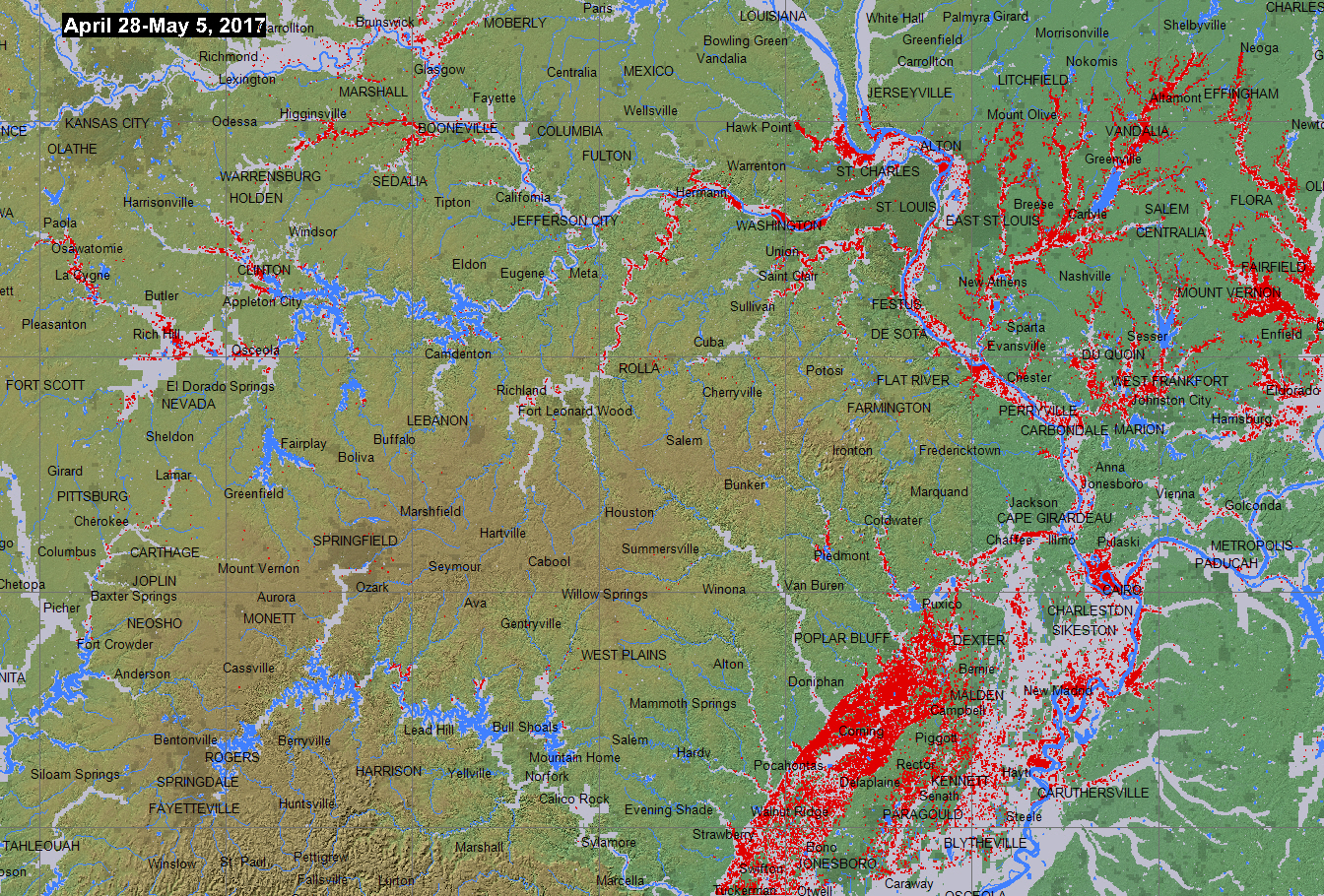
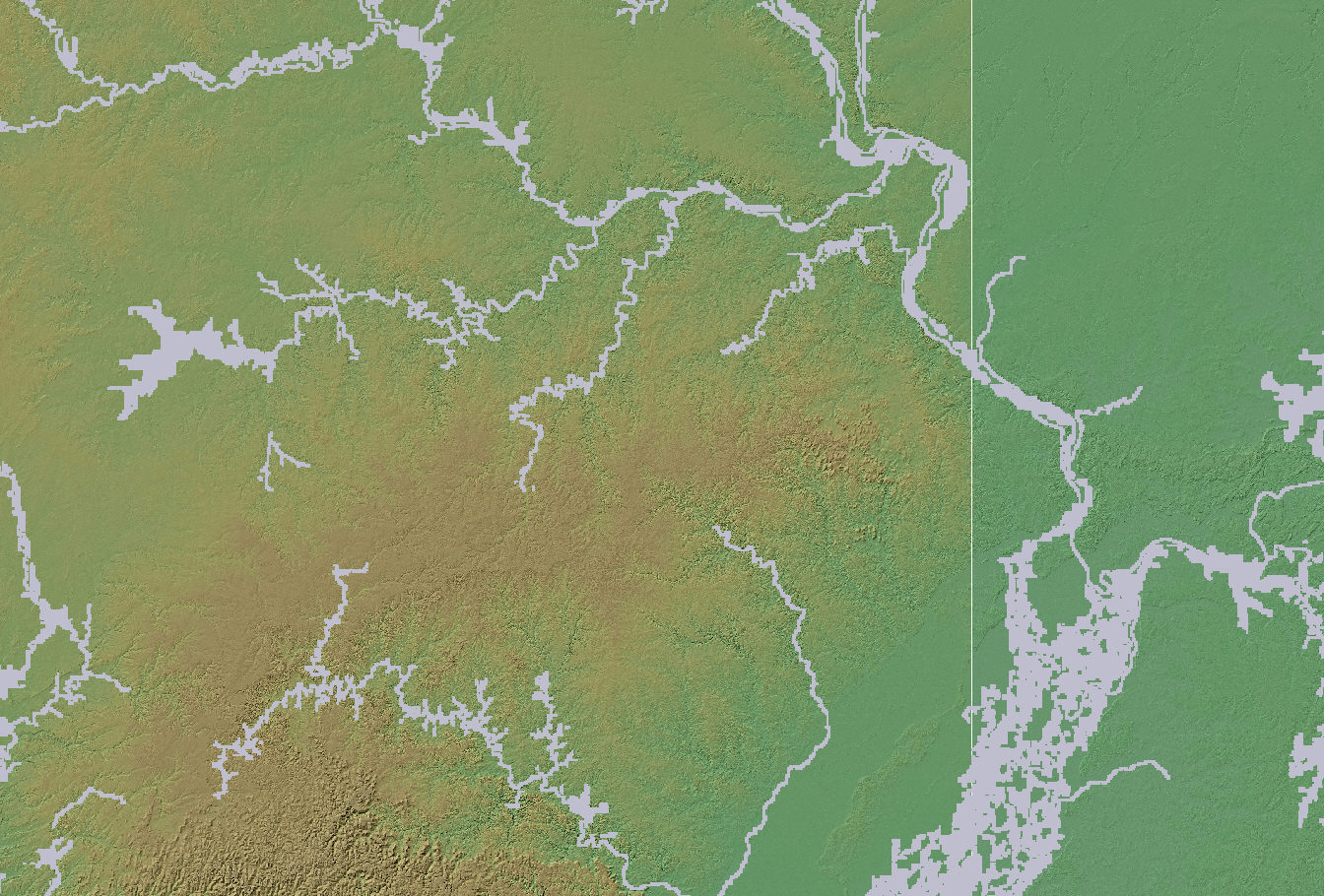
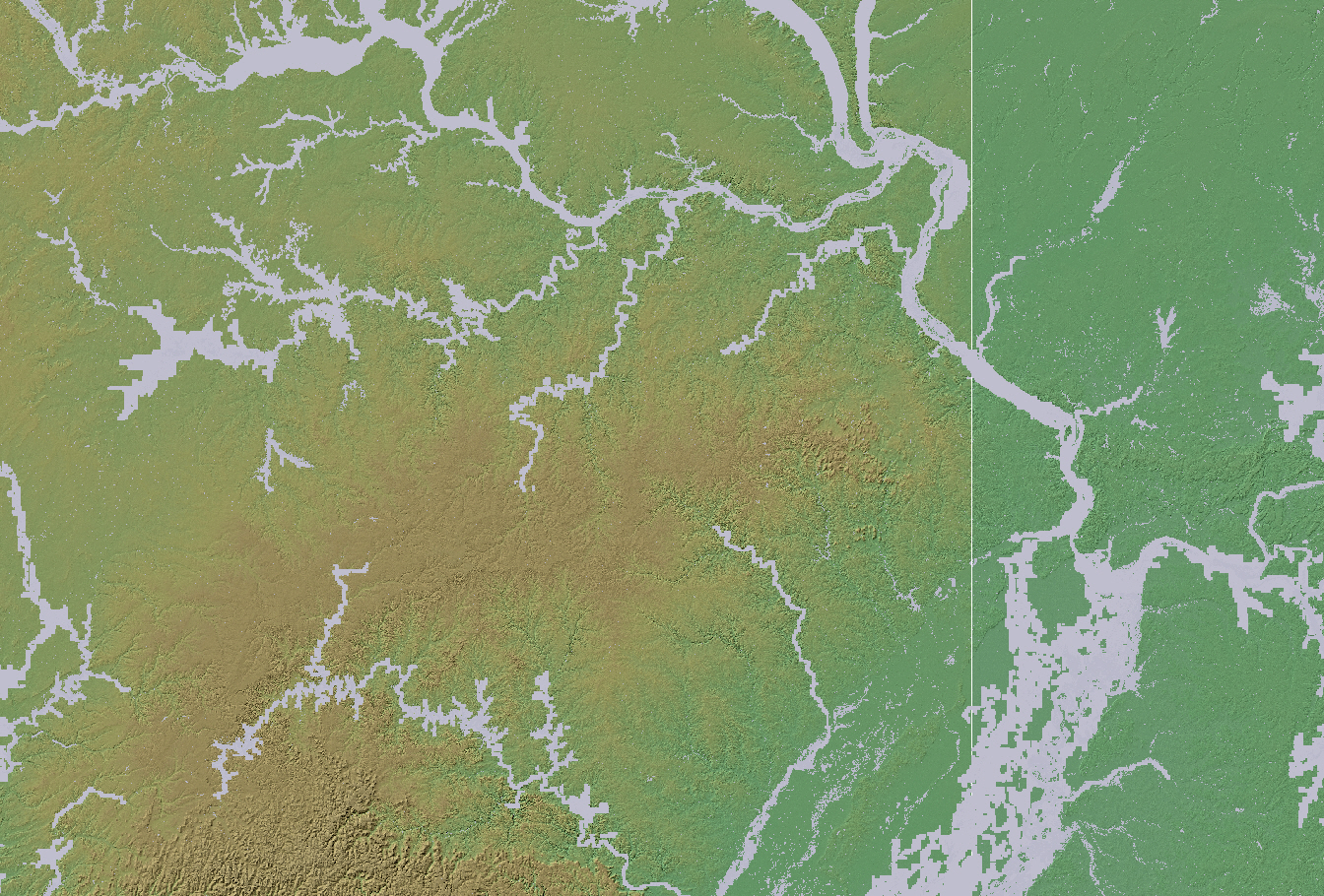
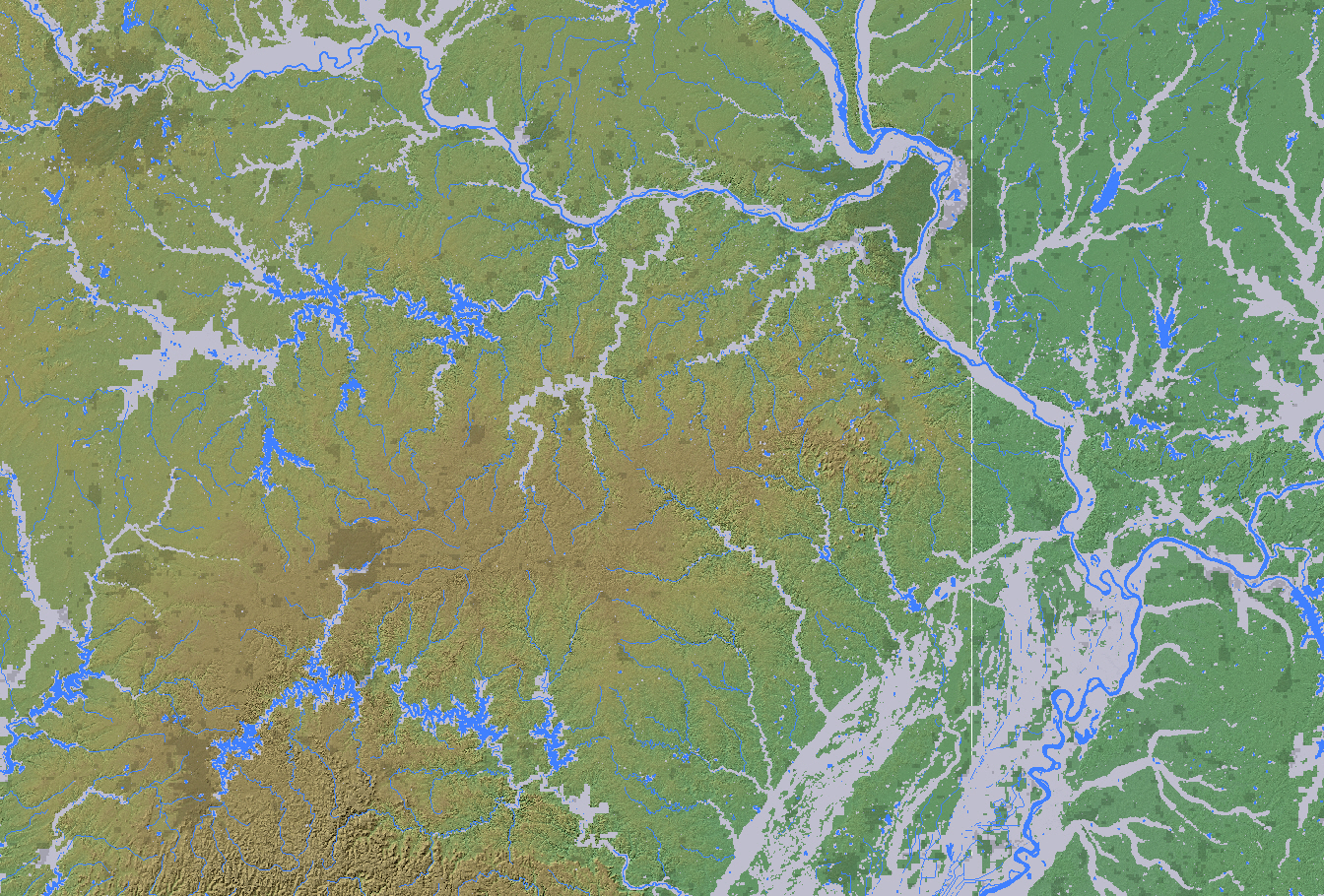
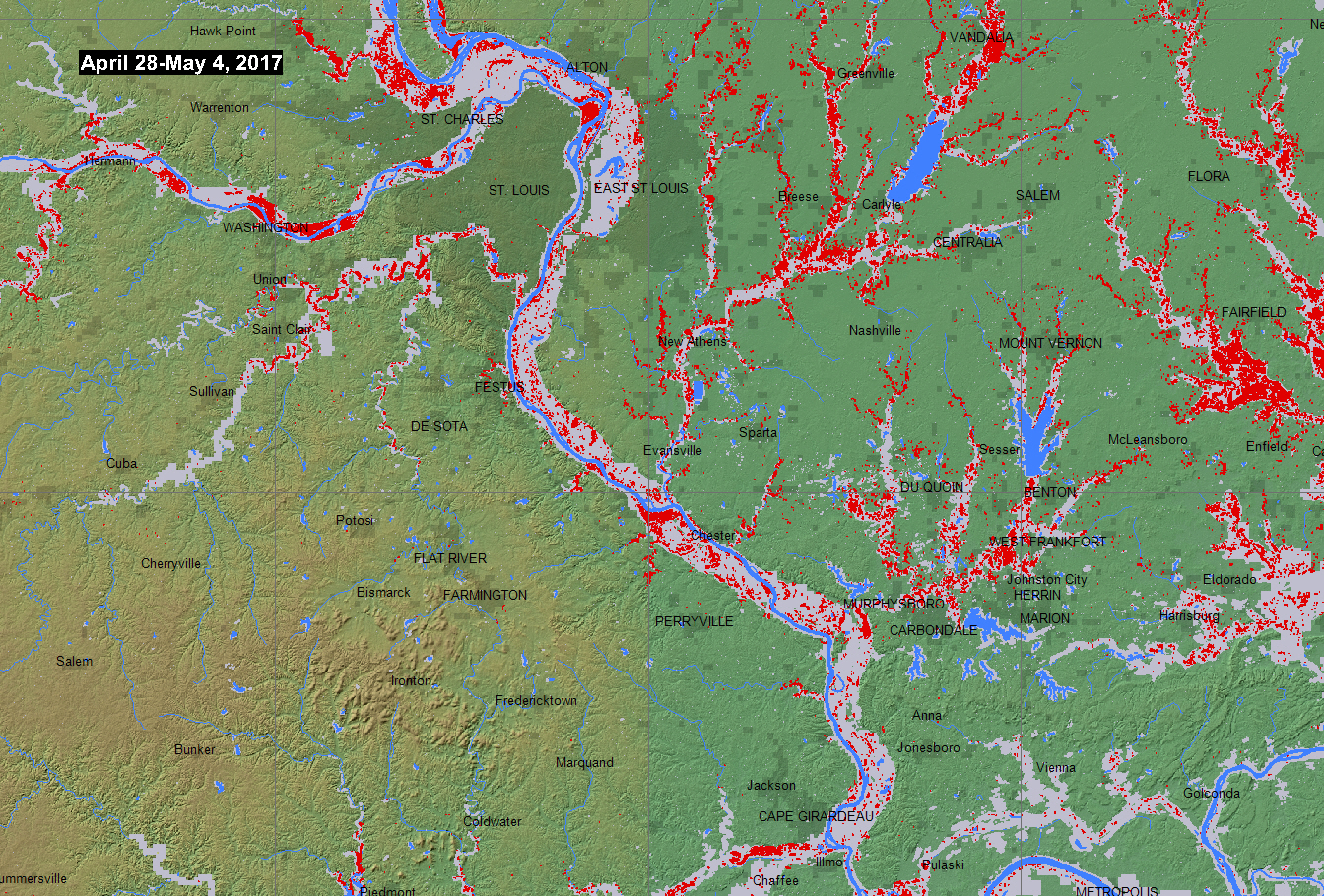
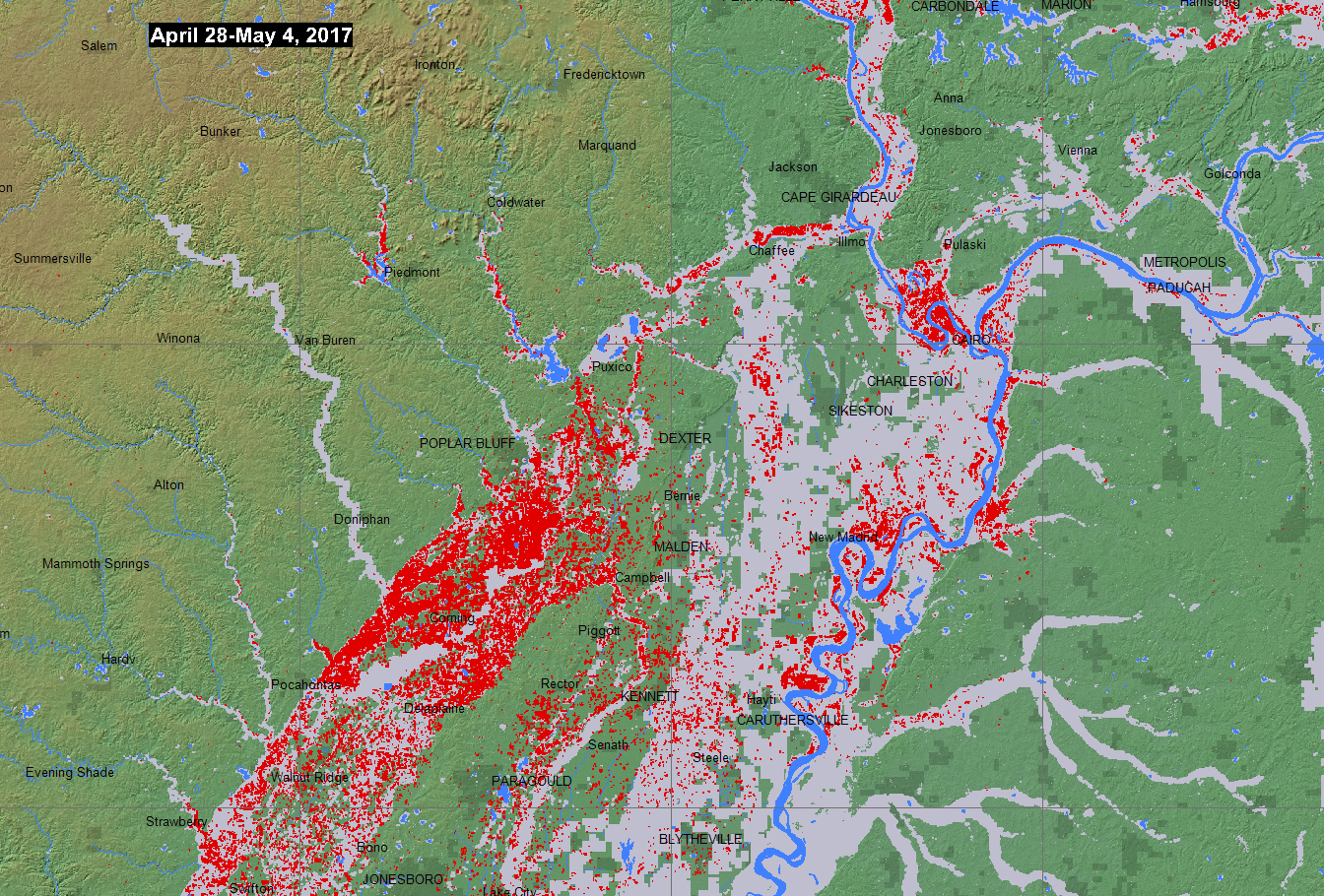

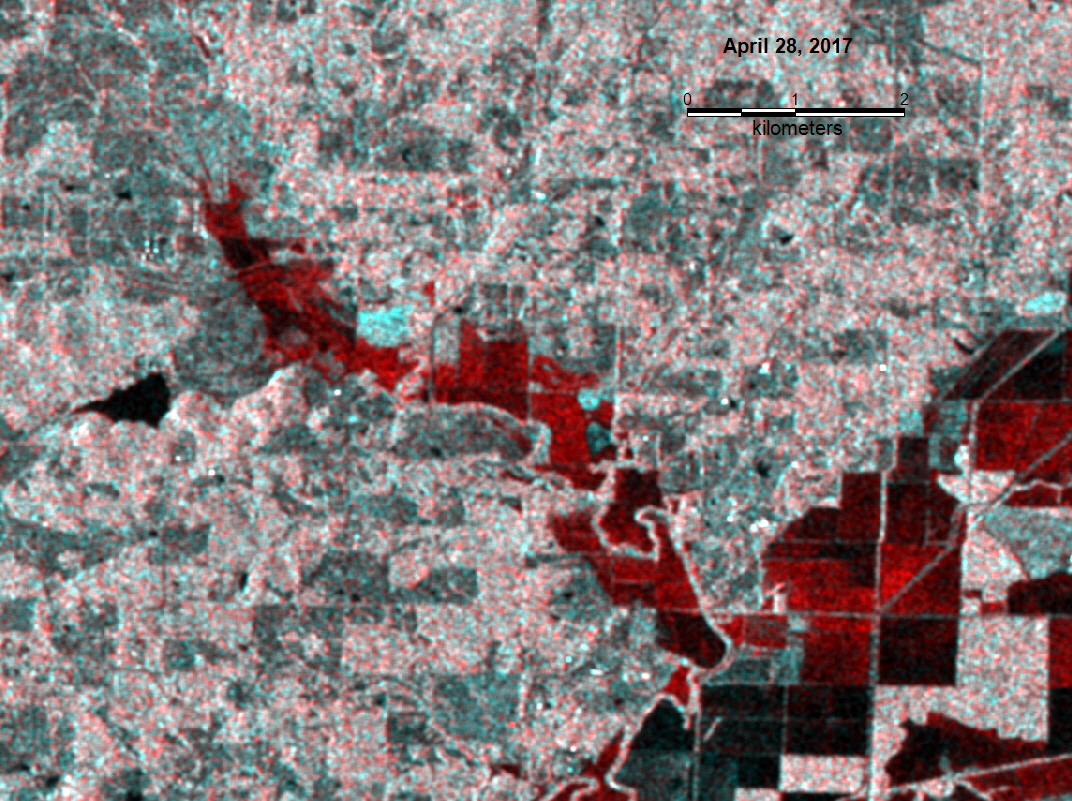
The Flood Observatory maintains a Global Active Archive of large flood events, 1985 to present. This listing is available to the public in both spreadsheet and GIS formats (both formats together provide the complete Archive). New events are entered into this archive each week. As of the end of 2016, there were 4432 events; each has a unique archive number. A single GIS polygon for each event defines in approximate terms the total area affected.
In some cases, severe or damaging floods become the focus of Observatory inundation mapping. As part of collaborations with other organizations, and the Global Flood Partnership, the Observatory's maps and other data are made available to the public. With attribution, they can be used freely, including for commercial purposes, under the terms of the Creative Commons license shown below. Geotif versions and GIS files are also provided for these maps through the links below.
This event is selected for Observatory production of map and GIS data products.This web page and associated image and map (GIS) files are the permanent Flood Observatory record of this event. As the flood event proceeds, additional flood extent layers are added; the objective is mapping of the maximum extent flooded.
Provided here is brief information leading to the selection of this flood for mapping.
According to USGS Flood Alert: PROJECT ALERT NOTICE (MO) Record Flooding in Missouri Date: Mon, 01 May 2017 11:51:58 EDT Summary: Record flooding isolated to larger drainage basins continuing in Missouri. Precipitation events have moved out of the state, large drainage area gaging locations impacted with record floodwaters. Yesterday 68 gages above flood stage, today there are 62 gages above flood stage. State of Emergency Declaration yesterday; two (2) known fatalities and over 100 evacuations and rescues have occurred throughout portions of central and southern Missouri. Over 30 streamgages have experienced period of record peaks within the White, Arkansas, and Lower Mississippi Basins. Total of 5 crews (staff of 10) are working within the Gasconade, Meramec, Current, St. Francis, and Big River basins. High water mark crews are being deployed this afternoon for peak verification to support anticipated AEP computations. Working with USACE for some special measurements and temporary gage installations. Media contacts have been made, several news crews. "
In addition to the maps above, for web map service-based information visit this DFO link. Zoom in to location of interest, and turn on appropriate event and other data layers.
Brakenridge, G.R., Kettner, A. J., Schumann, G .J.-P., and Andreadis, K., date accessed, "DFO Flood Event #", Dartmouth Flood Observatory, University of Colorado, Boulder, Colorado, USA, http address. Other citations to data incorporated in DFO maps are provided below.
The LISFLOOD-FP/WBM Flood Hazard Model is not yet published, but is based on recent work by these four authors and on methods described in: "Rethinking flood hazard at the global scale", Guy J.-P. Schumann, Dimitrios Stampoulis, Andrew M. Smith, Christopher C. Sampson, Konstantinos M. Andreadis, Jeffrey C. Neal, Paul D. Bates, 9 October 2016, DOI: 10.1002/2016GL070260. See also this link to NASA NEX.

The maps and web page are by G. R. Brakenridge and A. J. Kettner and are provided here under the terms of a Creative Commons Attribution-NonCommercial-ShareAlike 4.0 International License.
NASA Landsat 8 and ESA Sentinel SAR data if used in this map were obtained from the the U.S. Geological Survey Hazards Data Distribution System. and the Sentinels Science Data hub, respectively. Landsat 8 is jointly managed by NASA and the United States Geological Survey.
Notes on Sentinel SAR data processing: Most commonly, two "exact repeat" images are retrieved from ESA's Sentinels Data hub, from before the flood and during the flood. ESA SNAP software is used to reproject the two images into a geographic (latitude and longitude) coordinate system. A 5x5 low pass filter is applied to both images. A threshold ranging from 50-60 is applied to the flood image, resulting in a subset of only very dark (interpreted as water) pixels. A threshold of .5-.7 is applied to a flood image/preflood image ratio product, resulting in a subset of pixels much darker in the flood image then before (this removes permanent surface water). A Boolean "AND" step then provides only pixels that satisfy both conditions.The exact thresholds used vary in the ranges provided; more strict thresholds map less flood water but also produce less false-positive errors. GIS vectors (polygons) are fit around pixels in the final "flood water" result: the red areas on the flood event maps, and the provided shp files.
Flood extent files (Shp or Mapinfo) supporting this Flood Event Map are located here.
These files may include high spatial resolution mapping such as from Sentinel or Landsat, or lower resolution files from MODIS. Draft versions may be posted and later revised; final versions include "final" in the file names. The WMS (web map server) also visualizes the final.shp files.
Click here for access to an automated daily MODIS-derived .shp file GIS record (record commences in 2011). Choose appropriate 10 deg x 10 deg map sheet directory and appropriate dates; longitude and latitudes refer to upper left map sheet corner. Not all floods are mappable at the MODIS spatial resolution of 250 m, Some DFO event maps also include these automated MODIS data.
Data from the Global Surface Water Explorer is included as part of the light gray previous satellite-mapped water extent. It is based on Landsat data at a spatial resolution of 30 m (Jean-Francois Pekel, Andrew Cottam, Noel Gorelick, Alan S. Belward, High-resolution mapping of global surface water and its long-term changes. Nature 540, 418-422, 2016). The NASA Shuttle Water Boundary Data (SWBD) surface water extent (90 m resolution), blue, was derived from NASA's the 11-day February, 2000, SRTM mission and this "permanent" water layer was also corrected using Landsat data.
When used, NASA NRT Global Flood Mapping maximum water extent for the years 2013-2015, at 250 m spatial resolution, provide part of the (light gray) previous satellite-mapped water extent layer. DFO creates these annual water extent layers from data provided by that project, by accumulating into one annual file all of the daily .shp files for each year. DFO has also produced flood extent files through mapping of individual floods (~ yr 2000 to present); these are also included in this layer.
The flood model layer represents a 6-year simulation (2006-2011) of flood inundation from the 2-D LISFLOOD-FP flood model and it shows the predicted maximum extent of flooding during that period. This is an estimate of where flood waters can reach during high magnitude events. The model was conditioned on event-continuous flows as simulated by the Water Balance Model (WBM), a large-scale hydrological model. The river network used in the 2-D flood model is based on Landsat, with rivers larger than 50 m in width being simulated, and the floodplain topography is from the globally available SRTM-DEM. The resulting accuracy of floodplain inundation is affected by how accurate the flow simulation and by any errors in SRTM-DEM topography. DFO combines this flood model layer with all previously mapped flooding to produce a flood hazard layer suitable for comparison with new flood events.
Global Flood Monitoring System (GFMS) displays, if provided here, are from the University of Maryland. Reference: Wu, H., R. F. Adler, Y. Tian, G. J. Huffman, H. Li, and J. Wang (2014), Real-time global flood estimation using satellite-based precipitation and a coupled land surface and routing model, Water Resour. Res., 50, doi:10.1002/2013WR014710.
Global Flood Awareness System (GloFAS) displays, if provided, are from the European Commission Joint Research Centre and the European Centre for Medium-Range Weather Forecasts. Reference: Alfieri, L., Burek, P., Dutra, E., Krzeminski, B., Muraro, D., Thielen, J., and Pappenberger, F.: GloFAS – global ensemble streamflow forecasting and flood early warning, Hydrol. Earth Syst. Sci., 17, 1161-1175, doi:10.5194/hess-17-1161-2013, 2013.
NASA's Earth Sciences Program, the Latin American Development Bank, the World Bank, the European Commission (Global Disaster Alert and Coordination System, GDACS), the Google Earth Engine research awards program, the Committee on Earth Observation Satellites (CEOS) Disasters Working Group-Flood Pilot, the Japanese Space Agency, and the European Space Agency. GPM and AMSR-2 satellite microwave data for River Watch is processed first within GDACS.
The Dartmouth Flood Observatory was founded in 1993 at Dartmouth College, Hanover, NH USA and moved to the University of Colorado, INSTAAR, CSDMS in 2010. The institutional support of both universities is gratefully acknowledged.
(counting since May 1, 2017)